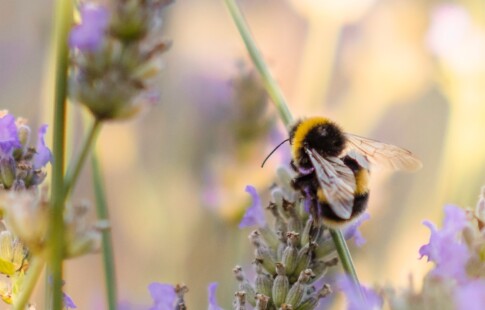
How to Stop Ocean Warming
We are reader-supported. When you buy through links on our site, we may earn affiliate commission.
As greenhouse gasses enter the atmosphere, they cause ocean temperatures to rise. This process can harm marine life and ecosystems. However, there are steps we can take to slow down climate change. Here are some tips for how to stop ocean warming.
The Problem
The ocean absorbs large amounts of greenhouse gasses, mostly through fossil fuels. From 1901-2020 the sea surface temperature rose at a rate of 0.14℉ per decade. The ocean warming effect isn’t evenly distributed. You can see the greatest impact in the Southern Hemisphere.
The increasing temperatures lead to deoxygenation and rising sea levels. These changes cause the loss of breeding grounds and mass migrations. Also, coral bleaching increases mortality rates for fish.
Ocean warming also has an impact on humans. It can lead to food scarcity and economic challenges. Plus, the rising temperatures cause more severe hurricanes and intense droughts and floods.
The Solution
Climate change is a problem for both marine life and humans. So, it is important we understand how to stop ocean warming. Here are some ways you can make a difference.
1. Reduce Greenhouse Gas Emissions
One of the most important steps is lowering the amount of carbon dioxide in the atmosphere. According to the Paris Agreement, we need to reduce carbon emissions by about 1 to 2 million tons each year.
One of the ways to reduce carbon emissions is to use renewable energy, such as solar. Solar power only generated 2% of the total electricity in the U.S. from October 2018 to September 2019. So, consider adding solar panels to your roof. In addition, take public transportation or walk whenever in urban areas. This can reduce the production of fossil fuels and lower your gas expenses.
Here are some more ways to reduce your carbon footprint:
- Lower your meat consumption
- Buy second-hand clothing
- Purchase energy-efficient appliances
- Unplug electronics after they are fully charged
- Use reusable water bottles
2. Conserve Marine Ecosystems
Monitored areas help protect the fish from environmental changes. It’s also important to regulate human activities to prevent the loss of marine habitats. Another way to maintain these ecosystems is to pick up trash from your local beach or park. You can also donate to non-profit organizations protecting marine life, such as Oceana.
There are things you can do daily, like consuming less plastic and reducing your energy consumption. Also, whenever viewing marine life, watch from a safe distance.
3. Build up Coastal Ecosystems
We can restore some of the ecosystems that were damaged. Ecologists can build artificial habitats or use assisted breeding techniques. Other solutions include reopening rivers, reconnecting rivers to floodplains, and reducing coastal runoff. These projects often require funds through grants and community-based programs.
4. Monitor Human Activities
Governments can create policies for seafood suppliers to keep production within sustainable limits. For example, they could set catch limits and eliminate subsidies. Additionally, they can create zones prohibiting development along the shoreline. This can reduce the impact of coastal flooding and erosion.
Plus, new monitoring tools can forecast and control marine disease outbreaks. The government tool Coral Reef Watch uses sea surface temperatures to predict bleaching. Some ecologists are looking at other factors, like water quality and coastal development.
5. Expand Scientific Research
Strengthening our knowledge is key when deciding how to stop ocean warming. Governments should invest more funds into scientific research. It’s important to collect data on the scale, nature, and impacts of ocean warming. The more we understand the easier it will be to develop effective solutions. The National Oceanic and Atmospheric Administration (NOAA) is one organization getting involved. They provide climate reports, with global temperature and precipitation information.
6. Remove Carbon Dioxide Already in the Atmosphere
To slow down the rising temperatures, we need to extract carbon dioxide from the air. Also this requires innovative technologies that are still being developed. One method is incorporating rock dust into fertilizers to remove carbon dioxide.
In addition to technology, planting new forests can help to pull carbon dioxide from the air. In fact, a tree can consume carbon dioxide at a rate of 48 pounds per year. You could also add a garden to your home, which can increase its curb appeal.
7. Buy Local and Sustainably Caught Seafood
Buying local seafood limits the need for vehicles that emit greenhouse gasses. It also benefits the local economy. Ensure the fish was sustainably and legally caught as well. Check to make sure it has a certified label from Marine Stewardship Council. You can also look at the nutritional information. Sustainable fish usually have a higher value.
How to Stop Ocean Warming Today
Taking care of the oceans is important to protect marine species and humans. Through everyday activities, we emit tons of greenhouse gasses into the atmosphere. So, follow these tips on how to stop ocean warming and make a difference today.
Share on
Like what you read? Join other Environment.co readers!
Get the latest updates on our planet by subscribing to the Environment.co newsletter!
About the author

Jane Marsh
Starting from an early age, Jane Marsh loved all animals and became a budding environmentalist. Now, Jane works as the Editor-in-Chief of Environment.co where she covers topics related to climate policy, renewable energy, the food industry, and more.





